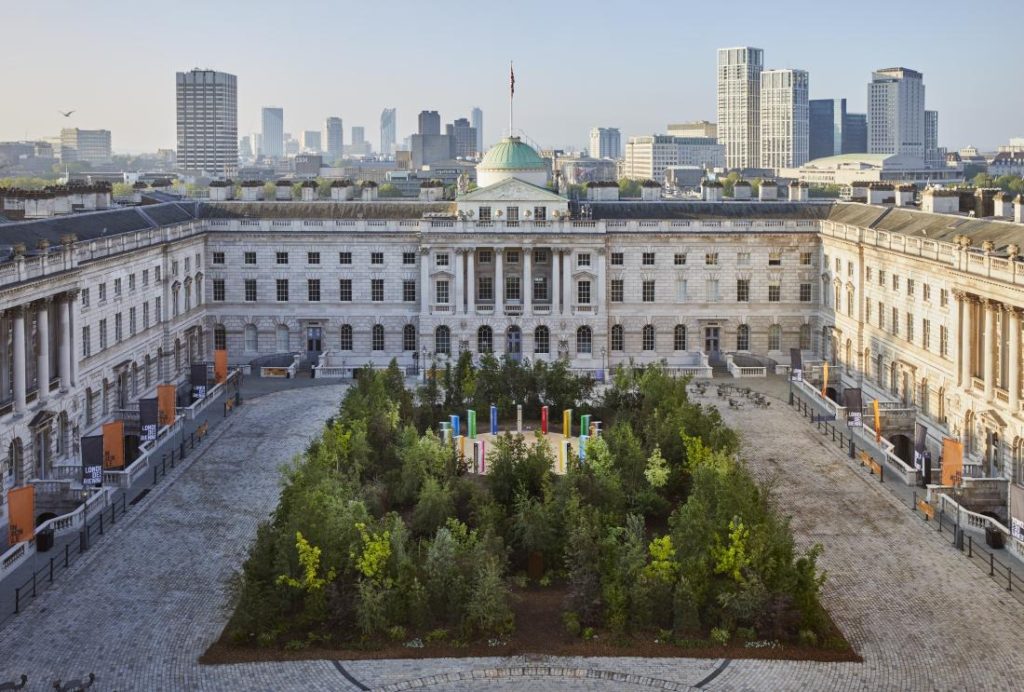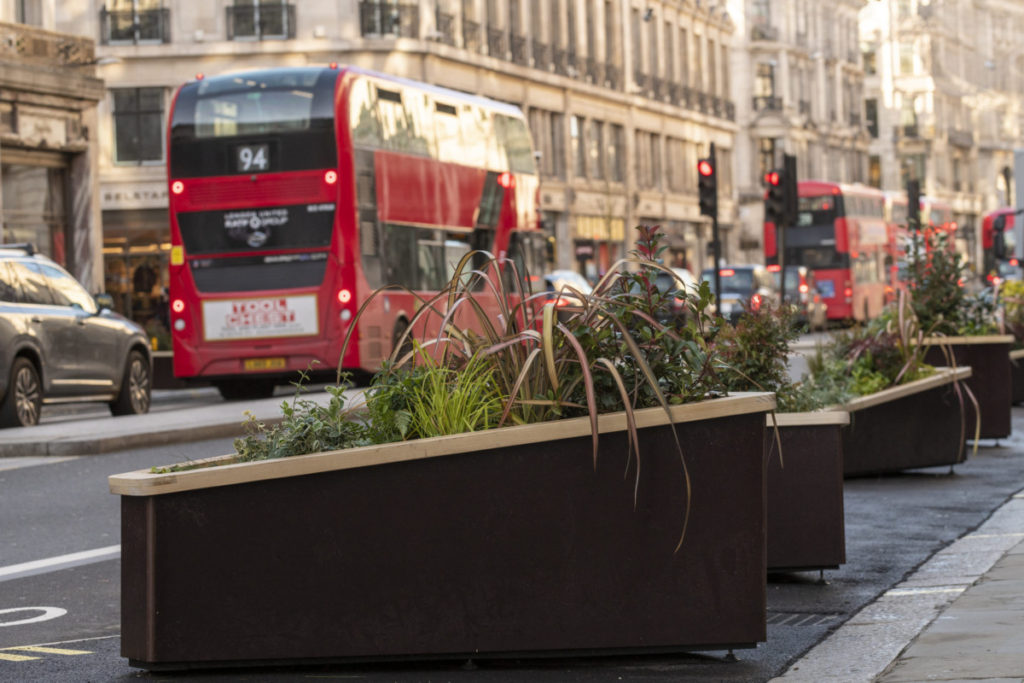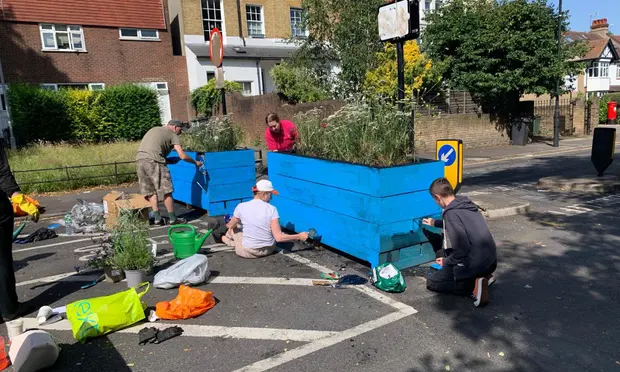Written by:
As a keen gardener and life-long Londoner, I’ve been pleasantly surprised to see areas of London turning super green over the lockdown. From enthusiastic locals to gardening groups taking up their shovels to beautify their local parks or create their own growing projects for their local communities, it’s been a marvellous time for greening, growing and connecting with each other.
You can imagine my delight at finding Regent Street full of trees creating a sea of green foliage for my discerning eye to catch from the top deck of the bus. I also happened across Somerset House’s Design Biennale Pavilion as it was being set up. Although very pretty and somewhat quirky, finding a mini forest in the middle of West London got me thinking. How sustainable is all of this? Where do the trees go after the Biennale? How was this mini forest and the street trees being maintained?
To give you some background on the project, Es Devlin, designer of the work dubbed Forest for Change and Artistic Director of the Biennale, wanted to “counter this attitude of human dominance over nature by allowing a forest to overtake the entire courtyard.” An interesting fact is that 250 years ago trees were banned for the courtyard, so in an act of defiance, Devlin brought 400 trees of 27 varieties typical of those found across the UK and Northern Europe, into the space. The piece was also inspired by The UN Global Goals, an ambitious and drastic plan agreed to by all nations to create a better and fairer world for all by 2030.

Many collaborators worked on the woodland pavilion including Urban Greening Specialists Scotscape, Barcham Trees, Quercus Nursery, and Landscape Designer Philip Jaffa. The experience was also presented in partnership with Project Everyone, a not-for-profit agency that aims to further awareness and engagement with the United Nations’ Global Goals for Sustainable Development.
After doing some further research, I found all the trees were rehomed in the boroughs of Islington and Southwark. The shrubs were given to Greenfingers Charity, a national charity dedicated to supporting life-limited children and their families who spend time in hospices around the UK by creating beautiful gardens for them to enjoy and relax in.
It’s put my heart at ease to know the legacy of the pavilion was well thought out in advance. But what of the maintenance of new trees?

Though I couldn’t find much on the maintenance of the Regent Street planters, in which the associated furniture elements were developed, manufactured, and delivered by Urban Street Furniture, I could find some details about the project. The scheme is part of an 18-month temporary traffic order to widen pedestrian space and reduce the volume and speed of traffic.
Other traffic calming measures, such as Local Low Traffic Neighbourhoods (LTNs) and parklets have popped up all over London. LTNs are intended to discourage car use for shorter local trips and to reduce traffic flow along smaller residential streets. Usually made up of components including planters, cameras and road signs, LTNs have come under fire over the last few months.
The process of maintenance seems to vary in each borough. Some residents have taken it upon themselves to care for their planters, and some have even decorated them with puppets, bunting and intricate paintings. Sadly, a few occurrences of vandalism have ruined some of the LTNs, however, communities have collectively cleaned, redecorated and tended to the planters quickly and efficiently. Many of these incidents have been highlighted in the news as of late, and in Lambeth in particular.

Though the reactions to LTNs are mixed, the displayed floral and fauna shouldn’t be damaged to prove a point. The traffic calming measures have been put in place to make our streets safer, more attractive and less polluting.
The intentions driving all of these projects are sound. We would all benefit from greener streets and public realm. However more thought should go into the legacy of these pop-ups and experiments. It’s all well and good to create a project that makes an impact in the now, but while working with plants especially, further thought into the care, maintenance and future reach of the plants used and shared is required. Sourcing the plants from suppliers of good repute and that have a good and sustainable practice must be at the forefront of any greening project. and perhaps more could be done to work with local people to design and implement these projects from the outset. This might unlock their potential to activate local people both as urban gardeners, and as placemakers.


